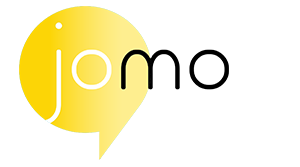We don’t give ourselves enough credit in the contact centre industry.
Since the middle of March, we’ve transitioned from a world in which remote working was a rarity, to one in which 84% of contact centres are now mostly home-working. And we’ve done it without damaging the quality of service we provide. In fact, we’ve actually seen some massive benefits:
- 75% of organisations now say that attrition is lower
- 61% say productivity is higher
- 54% say absenteeism is reduced
We’ve probably seen more fundamental changes to the way we work in the past three months than in the previous decade – or maybe even longer. We’re smashing it, and we deserve a pat on the back for it.
But (sorry, there’s always a “but”), we’ve only been locked down for three months…
While we’ve adapted to the crisis super-quickly, what happens in the longer term when remote working stops being a novelty and becomes a fact of life?
How do we keep teams engaged, maintain a positive culture and onboard new talent effectively?
How do we retain our culture and values when a big chunk of the workforce could be out of the office at any given time?
Fortunately, we’re not on our own. Plenty of companies have been through this same process before, and they’ve lived to tell the tale. We’re not talking about trendy tech startups that were 100% remote from day one, but about companies with strong cultures centred around working (and socialising) in one place, who’ve successfully adapted to the remote world. We can learn from the things that have helped them build remote teams who are just as bought into the company vision as their colleagues in the office.
Here are the tips, tools and tactics you should absolutely be considering to keep your remote workers productive and engaged going forward:
1. Step up your health and wellbeing benefits
Cycle-to-work schemes and free gym memberships can be fantastic perks – but they’re not great for right now. And if contact centres are going to enjoy the full benefits of employing people who work anywhere with an internet connection – not just within a few miles of the office – they might not be effective in future, either.
Many companies have already started repositioning their health and wellbeing benefits to make them more attractive to remote teams. Front, a collaboration app founded in Paris and now based in San Francisco, usually use an employee perks platform called Cherry to reimburse employees for gym memberships, therapy and wellness activities.
In recent weeks, they’ve expanded this package to include benefits that are more appropriate to team members working from home – things like reading, meditation and language lessons. They host guided meditation sessions on Zoom every Wednesday, and have started posting age-appropriate books to employees with young children so they can read to them while working from home.
“The least a company can do in these times of high uncertainty is to find ways to cheer up employees, help them weather this storm, and make sure they know they’re valued.”
– Mathilde Collin, Co-Founder & CEO at Front
As with so many others, digital identity management company Keyfactor have rapidly moved to being 100% remote in recent weeks. Since then, they’ve adopted loads of measures and perks designed to maintain and build on its three core values:
- Trust is paramount
- Deliver with agility
- Teams make it happen
These include once-a-week cross-functional lunches, where people from different departments sign up and meet – via Zoom – during their breaks to discuss two important subjects: what they’re working on right now, and what they’re eating for lunch! They’ve also introduced Thursday afternoon “open mic” sessions, where employees play instruments, sing, or showcase other talents. Mary Mathews, Keyfactor’s Director of HR & Business Operations, says the open mic sessions are a “great way for our employees to decompress at the end of the day”.
Meanwhile, advertising and PR giant Havas have stepped up investment in their Havas Equalise programme – a regular schedule of events that its employees can join in with. These sessions include practical workshops on topics like protecting your mental health while working from home, building stronger remote relationships, and looking after kids at home while simultaneously trying to work (which is definitely something we can relate to at Jomo).
“This work would usually be done face-to-face … but is proving very successful via teleconferencing and online, and shows just how much we need to look after ourselves and each other at this time of unprecedented change.”
– Chris Hirst, Global Chief Executive of Havas Creative
2. Encourage remote socialising
Contact centres are pretty sociable places – that’s one of the things we love most about them. And that’s definitely good news, because employees rate workplace friendships as more valuable than a pay rise. What’s more, teams that socialise together tend to be happier, more engaged and less stressed.
But how do you enable your team to keep socialising when any number of them may be working remotely at any given time? If your social culture is based around things like playing table tennis and table football, photographing the office dog and going to the pub, how does that translate to the world of remote work? Especially now that we’ve all overdosed on Zoom quizzes.
Keyfactor and Help Scout, a global provider of help desk software, are just two of the many companies to encounter this same issue. Both have taken steps to encourage remote socialising.
Every Monday morning, Keyfactor employees are invited to a video call, bring along a brew, and chat about their weekend. Business talk is completely off the menu. It’s a great way for colleagues to kick off the working week and enjoy some interactive engagement.
Help Scout takes things a step further with its monthly themed “troop talks”, in which groups of 10 or more employees gather on Zoom and are given a theme. Previous themes have included:
- Recipe party: Sharing your favourite recipes
- Bon-app-etite: Discussing the phone app you can’t live without
- At Home with Help Scout: Taking colleagues on an MTV Cribs-inspired home video tour
These sessions help employees to discover shared interests that spark conversations and build bonds for the future.
“Asking a team dominated by introverts to volunteer to film themselves at home was a lofty request. To make it easy to participate, I offered to edit anyone’s raw footage – all they had to do was film and send. I also reached out to the extroverted minority to be my guinea pigs and help give the series momentum.”
– Leah Knobler, Director of Talent Acquisition at Help Scout
3. Make meetings more engaging for remote & on-site attendees
Anyone who’s attended a mixed meeting of home-workers and office-based staff will know that they can be pretty painful. It’s easy for remote attendees to disengage and drift into checking their emails or carrying on with their work – which means they might as well not be there in the first place. Trying to get them more involved can be frustrating for on-site team members who just want to get to the point.
We’re all going to need to find a solution that makes meetings engaging for everyone, because mixed meetings like this will be a fact of life going forward.
Workswell, a corporate consulting group that aims to help companies create healthier cultures, have attempted to overcome this issue by introducing elements to their meetings that encourage engagement and interaction. One tactic involves asking attendees to share an “aha”, an “apology”, or an “appreciation” at the end of the meeting:
- Aha: Sharing a lightbulb moment from the meeting;
- Apology: Saying sorry for something they did or said (like an overreaction);
- Appreciation: Discussing their favourite moment in the meeting.
“It changes the way employees engage with the meeting, since they may pay closer attention knowing they’ll be asked to give feedback at the end.”
– Jill Vialet, Founder and CEO of Playworks, the company which launched Workswell
4. Invest in your intranet to improve communication
Every guide to building an engaged remote workforce talks about the importance of over-communicating to ensure that your messaging really hits home. But at the same time, you don’t want to bombard your team with emails or cram their calendar with unnecessary meetings.
Your company intranet could be an unlikely solution. Traditionally, intranets have been under-utilised (and often unpopular, too). Only 13% of employees use them on a daily basis, and 31% have never used them at all. But several organisations are waking up to the benefits that they offer.
Flight Centre Travel Group are a great example. They recently rebuilt their intranet – appropriately named PILOT – from the ground up, allowing it to be accessed from anywhere via mobile or desktop. PILOT is also linked to Facebook Workplace, which sends notifications by push alert.
Rather than a static site packed with outdated resources, PILOT is being constantly redesigned and improved based on how Flight Centre’s 2,000 employees are using it. If a certain type of content is popular, they’ll produce more of it and make it more visible. Information that can simply be Googled – like baggage allowances – is left out altogether.
“The results are night and day,” says Flight Centre’s Internal Communications Lead, Tessa Buckman. Rather than being an organisational pain point, PILOT has become a core part of the company’s employee engagement strategy.
5. Drive engagement through gamification
While it’s good to consider all the fun things you can do to maintain a strong contact centre culture, it’s important to remember that work is the biggest factor in whether or not someone feels engaged.
In other words, if an employee finds their day job boring and unfulfilling, no amount of extracurricular activities will make much of a difference. And without the ability to chat between calls or grab a quick game of table football, there’s a much bigger risk of remote agents becoming demotivated and disenfranchised.
Gamification could be the solution. It’s designed to drive productivity and reduce attrition by rewarding agents through challenges and competitions tied to achieving key business goals. Top performers can be rewarded through a variety of monetary and non-monetary prizes.
“Even with the growth of robotic and automated technologies, agents are still the heart of the contact centre, and investing in the right tools and enrichment programmes to help them succeed is essential for corporate cultures.”
– Chris Hodges, SVP of Sales and Marketing at Noble Systems, a provider of omnichannel contact centre technology solutions
6. Use AI to strengthen your knowledge bases
As well as recognising and rewarding employees for hitting agreed performance goals, contact centres can drive engagement by simply making it easier for people to do their job.
FAQs and knowledge bases are a key source for agents, helping them quickly track down answers to common customer queries. Combined with dynamic and easily accessible call scripts, they can improve job satisfaction by removing some of the biggest frustrations of the agent role – while also increasing productivity.
Take things a step further by adopting virtual personal assistants – sometimes called “bot buddies” – that help agents to find answers to customer queries and provide suggested responses in real time.
“While some things haven’t changed during this period of upheaval, it has provided an opportunity to review employee engagement and the technology available to ensure happy employees and happy customers, regardless of which came first.”
– Thomas Rødseth, Chief Technical Officer of Puzzel, a cloud-based contact centre software provider
7. Promote your remote culture to new hires
Whether or not they ask you about it directly, candidates will want to know about your culture. And they won’t just want to take your word for it – they’ll want examples of it in action. But how do you communicate your culture to talent if you can’t show them around the office?
There’s an easy solution: when you’ve taken the steps to build a more engaging remote working culture, don’t forget to shout about it!
Dell, a multinational computer technology company with a workforce of more than 145,000 people, about 18% of whom work remotely, use social media to share what their remote team members are up to.
Employees are encouraged to create their own content – showing them working in their back garden on a sunny Friday afternoon, or sitting with their dog – and post it on Instagram with the tag @LifeatDell. These snaps are then reposted to the Dell account, offering new hires an authentic look into the lives of the company’s remote team. “It’s simple and very successful,” says Mohammed Chahdi, Dell’s Director of Human Resources.
At Jomo People, we empower contact centres to build happy, high-performing teams.
Get in touch to find out how we can help you build an engaged remote workforce. Read our other blogs.


